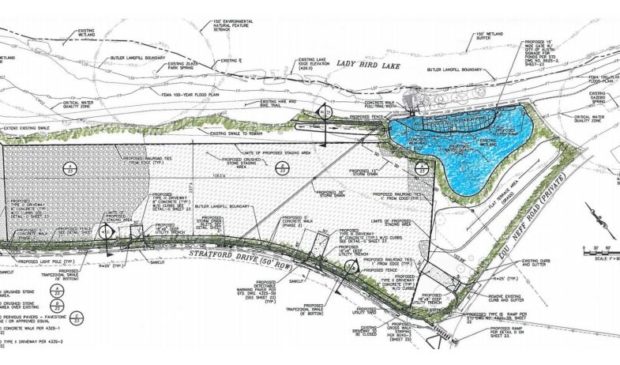Environmental Commission paves another path for Zilker parking
Friday, June 22, 2018 by
Jessi Devenyns After members of the Environmental Commission postponed a vote on a proposed Zilker Park landscaping project to gain a deeper understanding of the environmental suitability, two weeks later the tone of their response was not much different from their initial reaction.
At its June 20 meeting, the commission recommended that the Stratford Drive Landfill Redevelopment Project not continue in its current iteration.
“The entire time I sat on the parks board (12 years) … the Polo Fields were never brought up as a concern,” said Chair Linda Guerrero. “All of the sudden there is this dire emergency about the Polo Fields. I’m just perplexed.”
The Parks and Recreation Department presented this project as a single solution to multiple problems. It will resurface the aging landfill cap that is currently not compliant with Texas Commission on Environmental Quality standards, serve as a staging area for the Austin City Limits festival, and alleviate the overfill parking from the environmentally sensitive Polo Fields. It is also meant to be a temporary solution.
However, according to the commissioners and the dozens of members of the public who arrived to voice their dissent, not only does this temporary plan not appear to be temporary – according to Acting Parks and Recreation Director Kimberly McNeeley it is a three- to five-year fix – it does not adequately fix the problems that Zilker Park is currently facing.
The commissioners do believe that there is an appropriate way to address the park’s predicament.
“A large part of why we’re in this predicament is because we don’t have a master plan,” explained Commissioner Katie Coyne.
While all the commissioners agree that a master plan and a transportation study should be required before any changes or improvements are made to the landfill, Commissioner Andrew Creel said that he felt the overall discussion and public commentary was a little one-sided. No one from the public came in support of this project.
“C3 is a very important part of the city of Austin,” said Creel. “So I don’t want to entirely demonize them. … I want to find the right balance.”
C3 Presents, the production company that puts on the ACL festival, is contributing $1.7 million to the project.
Chuck Lesniak, the city’s environmental officer, addressed the commission to say that the current site plan application and the project were created under his watch and with his approval. Even so, the parks department did acknowledge that its solution is not meant to be a gold standard. “We have a lot of complicated things that need to be taken care of. … Parks saw this as an opportunity to make a small improvement to things that are not going well in Zilker Park,” said McNeeley.
McNeeley explained that the department does want to pursue a transportation study and a master plan; however, in the meantime, she insisted that this was the best interim solution. Commissioners, however, questioned the wisdom of a $1.7-million-dollar temporary solution, which has components that Scott Smiley, the consultant on the project from the Atkins engineering firm, said “will end up staying.” These components include tree removals, sidewalks and a water quality pond.
Guerrero also questioned the authenticity of the site plan, and Commissioner Wendy Gordon pointed out that there was “background info that was omitted by staff” as well as “bad actors and bad behaviors.”
According to Bruce Wiland, the treasurer of the Zilker Neighborhood Association, the overall impervious cover of the site was lowered to within regulatory limits by including two nearby tracts that make up the Great Lawn, which he explained has no bearing on the project. According to him, projects are generally not able to factor in adjacent land parcels to help mitigate for their impervious cover.
“We were trying to limit the size of the proposed water quality pond,” Rey Hernandez, the project management supervisor at the Parks and Recreation Department, told the Austin Monitor. “In order to do so,” he explained, “we included the two adjoining tracts (the Great Lawn) so that the impervious cover calculation would increase, thereby offsetting the size of the proposed water quality pond that would be required.” Hernandez said that the site plan proposal is still under review and that the approach is not yet approved.
Even though the commission unanimously voted, with Commissioner Marisa Perales absent, to recommend that this project does not continue forward without further study, Gordon recognized “there are some people with some other views here as well.”
“What (decision) is in the best interests of the community? That is what I’m struggling with,” she said.
The Parks and Recreation Board will review the project on June 26, and it will go before Council next week.
Diagram courtesy of the city of Austin.
The Austin Monitor’s work is made possible by donations from the community. Though our reporting covers donors from time to time, we are careful to keep business and editorial efforts separate while maintaining transparency. A complete list of donors is available here, and our code of ethics is explained here.
You're a community leader
And we’re honored you look to us for serious, in-depth news. You know a strong community needs local and dedicated watchdog reporting. We’re here for you and that won’t change. Now will you take the powerful next step and support our nonprofit news organization?









